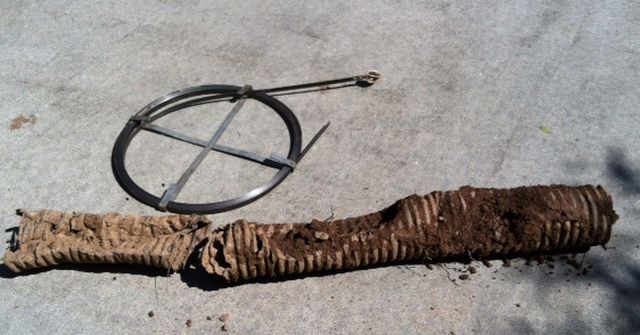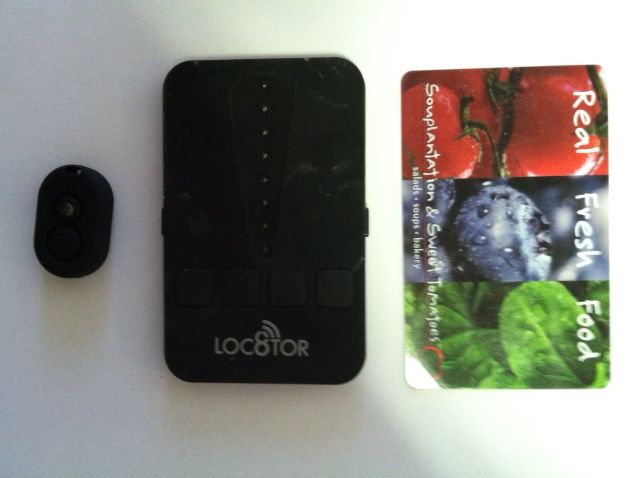About 20 years ago I dug a 100 ft trench for a 4″ drain pipe, which led from a concave area of the yard where the rainwater gathered, to a nearby creek. Over the years I planted many trees and shrubs in this area. The pipe worked well until the past few months when it completely ceased functioning. With downpours seemingly more intense than ever, I decided I had to fix the problem.
I have a 50 ft plumber’s snake and I inserted it in the hole and it moved along easily for 45 ft and then hit a blockage. I pulled the snake and inserted a contractor grade hose to the blockage and turned on the faucet thinking/hoping the water pressure would clear the blockage. To no avail, even after several days attempts. I concluded I should dig up and replace the blocked section of the pipe.

Problem was I didn’t know exactly where the pipe ran under the ground since, over the past 2 decades the landscape had changed. I tried digging a 5ft trench perpendicular to the supposed run of the pipe, but did not find it. The pipe is about 1 ft underground and digging a 1ft deep trench should not take much effort or time. Problem is the whole area is interlaced with the roots of good trees including a Japanese maple, Harry Lauder’s walking stick, and other worth preserving species. Plus some pretty thick pine roots as well.
How to locate the underground pipe? Plumbers use a transmitter on their underground probes, but they are expensive for a one time use. I googled personal locator devices and saw there are two options for the absent minded – with the cheaper device you attach a transmitter to your keys or other often lost items (not a cell phone because you just dial your # and it will ring) and, when lost, you press a button on the locator and the transmitter will flash and make a noise and you should find it. This wouldn’t work for an underground scenario. So I had to spring for the more expensive device (loc8tor lite) which has red and green directional lights on the locator as well as a beeper. You press the button, the locator calls the transmitter, the transmitter responds and then, with the locator in your hand you do a little circle and when you are nearer to the location of the transmitter, the locator becomes excited and even more excited with red and green lights glowing and noisier as you get nearer to the transmitter.

I placed the transmitter in a secure waterproof container (actually an old cylindrical 35mm film container) secured it with duct tape to the end of the plumber’s snake and sent it down the pipe. Initially my locator failed completely to detect the transmitter. So I figured its range must be limited when the transmitter is underground and to ensure I had the locator as close as possible to the position of the transmitter, I pushed the snake exactly 10 ft down the hole and measured exactly 10ft ground distance and, after removing some topsoil, I was able to locate the transmitter when it was directly below the locator separated by about 8″ of soil. The cheerful chirping and flashing green lights after hours of fruitless work was recompense enough. From there on it was easy going – measure out 10 ft distance on the ground, advance the snake 10 ft, clear the soil and the magical beeping and light flashing re-commenced. And so I continued until I located the blockage which was about 10 ft away from where I had thought the pipe ran and also much deeper than I had imagined. A worthwhile $68 investment and no doubt it will be handy for locating my often lost keys.

Thanks for the tip!
🙂